Large-leaved hydrangea: varieties, cultivation and reproduction
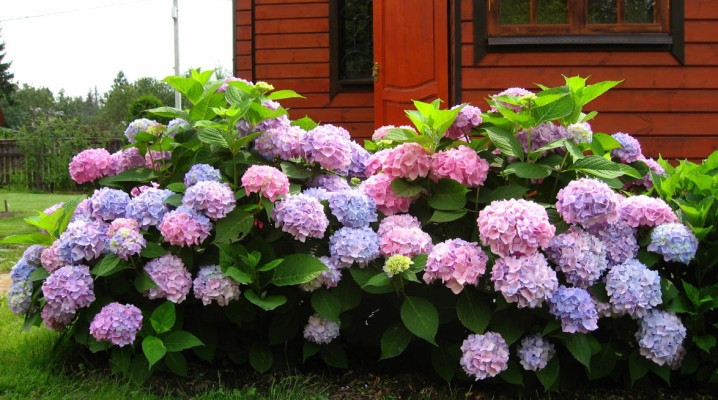
There are quite a few varieties of ornamental plants. Against the background of all this mass, the large-leaved hydrangea stands out favorably. However, this does not mean at all that such a plant is very easy to care for - if you chose it, you need to know how to properly handle it.
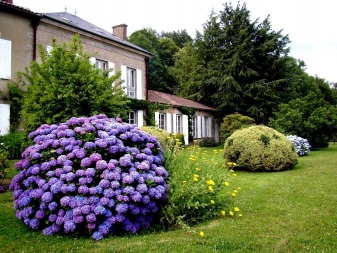
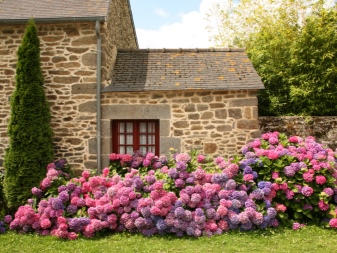
Peculiarities
Large-leaved hydrangea is a bush that grows up to 4 m. Its simple leaves are similar in shape to an egg and are painted in a bright green tone. The flowers are grouped into scutes, the size of which ranges from 0.1 to 0.15 m. The presence of large (up to 0.03 m) sterile pink flowers along the perimeter is noted. Cultivated forms of ornamental shrubs have inflorescences up to 0.2 m in diameter.
The attractive appearance of this plant fascinates people and quite a few people try to have it at home. However, this is not as easy as it seems. Macrophylla is harder to care for than other ornamental plants and the work must be carefully thought out. Leaves will only look good with a special touch.
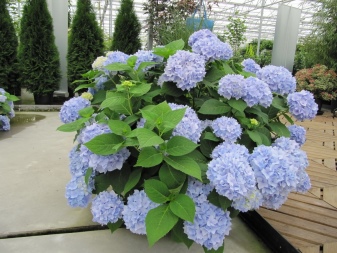
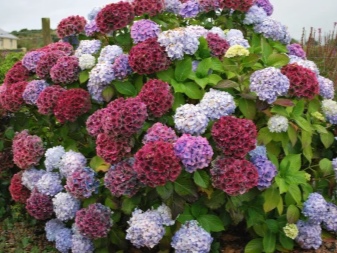
Common mistakes lead to the death of the upper kidneys or to the loss of a presentable appearance in general.
It is difficult to call the large-leaved hydrangea the most decorative or reliable crop in terms of horticultural success. However, large hats and bright, lush foliage will make these plants stand out. At the same time, the culture is distinguished by an amazing variety of tones. Each specific instance is colored differently if you change:
- chemical composition of the soil;
- its mechanical characteristics;
- fertilizer composition;
- the amount of dressings applied;
- water parameters;
- microclimate.

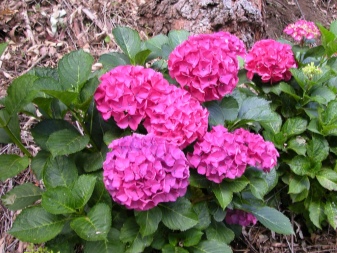
Manipulating the acidity of the earth allows you to get unusual blue and even light bluish shades in pink hydrangea. And this is without taking into account the fruits of many years of breeding work! The difference between the two concerns:
- flowering nuances;
- color changes;
- the size of the buds at different times.
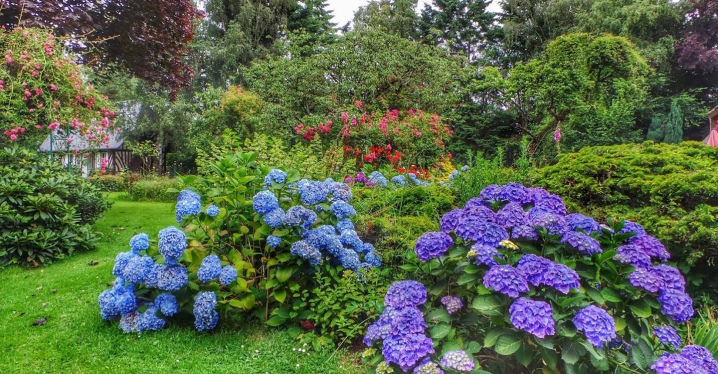
Popular varieties
In the descriptions of the large-leaved hydrangea, compiled several decades ago, it was certainly mentioned that this plant was not suitable for places with harsh winters. However, as a result of diligent searches, techniques and methods were found to protect the culture even in the middle lane. For their part, breeders have tried to make a number of varieties that are perfectly adaptable to difficult weather conditions. Moreover, the varieties that were developed in the first half of the twentieth century have long ceased to be relevant.
The main directions of breeding efforts were:
- increased resistance to cold winter (subject to proper shelter);
- quick recovery from damage;
- decrease in susceptibility to pests and pathologies.
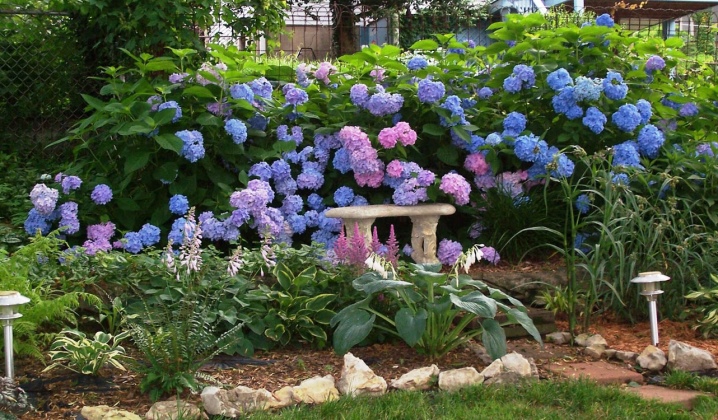
Important: there is no real difference between potted and outdoor types of hydrangeas. But the specifics of imported and adapted to local conditions of flowers must be taken into account. Otherwise, even the best and well-established cultures abroad will fail. The Papillon terry hydrangea is popular. When it fades, the bright pink color will change to a red-green color.
The characteristic features of the variety are:
- small bushes;
- rather dark foliage;
- increased density of inflorescences.

For repairing hydrangeas, Blueberry Cheesecake is a good choice. This plant forms bushes up to 1 m high. Flowering begins only in June, but under favorable conditions it lasts 3-4 months. The flowers, purple with a light yellow center, have a semi-double appearance.
Initially, the foliage is painted in very dark colors, with the onset of autumn, it turns red.

The sprawling Quadricolor rises up to 1.5 m in height. He has very large, up to 0.2 m leaves of a dense green color. Even the spots that appear on the foliage look interesting. Large thyroid inflorescences are distinguished by a white-pink tint. On an acidic ground, it is easily replaced by a blue color.
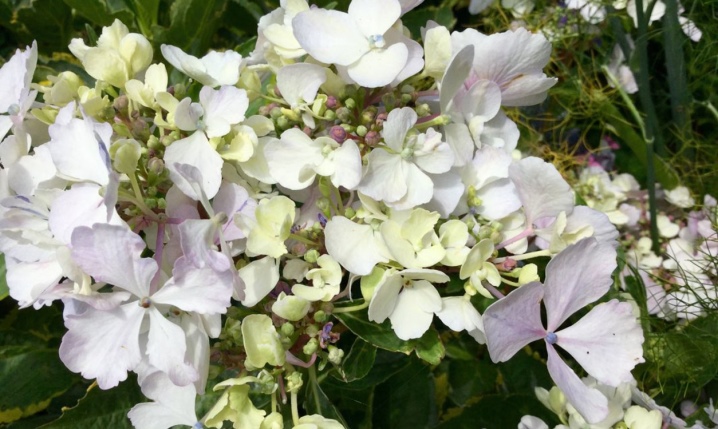
Lovers of hybrid plants should pay attention to Cotton Candy. The edges of the candy-like petals are wavy or jagged. The middle of the flower has a spot of yellow-light green color. The bush is small in size, but at the same time very thickened and not higher than 1 m. A characteristic feature of the plant is the heterogeneous dark color of the foliage and the strong branching of the stems. This variety is appreciated for the delicate look of inflorescences and plants in general.
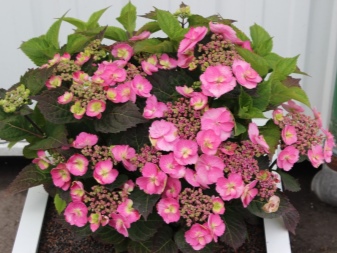
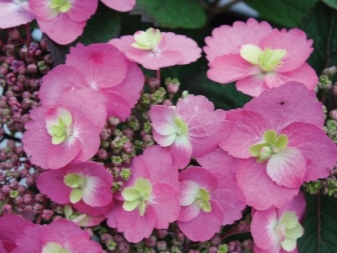
Earley Blue also deserves attention. This variety has appeared relatively recently. She has a well-developed root system. On last year's and fresh shoots, spherical inflorescences are actively formed. These inflorescences with a section of 0.15-0.3 m are characterized by blue-violet tones. The height of the bushes can reach 1.25 m. The crown is slightly rounded, strong branches are formed. The characteristic feature of the variety is the serrated leaves of a dark green color. Flowering occurs in June-September.

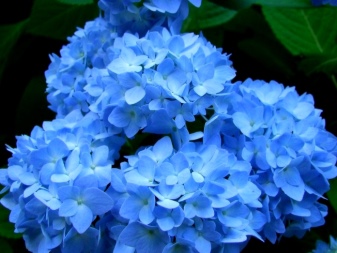
If you need a white hydrangea, then you should pay attention to the Annabelle variety. It belongs to the varieties that have been bred for a long time, but still has not lost its relevance. The height of the compact bushes is up to 1.5 m. The spreading crowns are similar to a dome, the outer section of which is 3 m. The gray-colored stems are bare. Leaves elongated up to 0.3 m with small notches at the edges are characteristic. The foliage remains painted in one color until the onset of cold weather. The culture will bloom from the first days of summer to early September. Annabelle adds 0.1 m per year. Places with low shading are recommended for the variety.
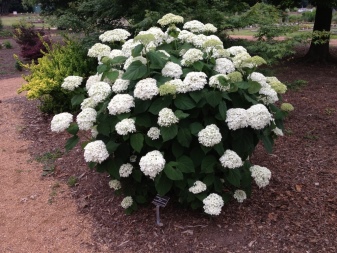

The Bouquet Rose deserves attention as well. This variety was bred a long time ago; in the early years of the twentieth century, it turned out to be very common. Despite the subsequent efforts of breeders, "Bouquet Rose" has every chance to remain in the field of vision of flower growers in the coming years. The bushes of this variety have shoots elongated up to 1.3 m. On these shoots, large rounded leaves appear, characterized by a velvety shell. The leaf plates at the base of the branches are larger than on their upper parts.
At the same time, the color of the plates remains green throughout the growing season. Flowering takes 3 months, but you can wait for it only in the third year. Large (up to 0.25 m in diameter) flower caps are characteristic.
The color of the flowers is determined by the acidity of the soil, therefore it can vary from a delicate pink to bluish tone.

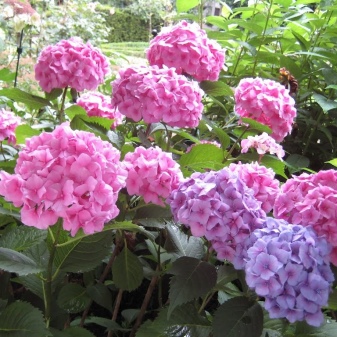
Bodensee is an attractive alternative. It is believed that this plant was bred by New Zealand breeders. On alkaline ground, it develops a juicy pink, and on sour - blue color. Ease of flowering and stability of the structure are noted. The number of flowers is very large. A positive property of the variety can be considered a highly developed root complex, as well as resistance to cold and strong winds. Bodensee's width and height are approximately 1.2 m. Umbrella inflorescences are formed from spectacularly sterile flowers, around which sepals with a smooth perimeter develop. The length of the leaf sometimes exceeds 0.12 m, and the width is more than 0.15 m.
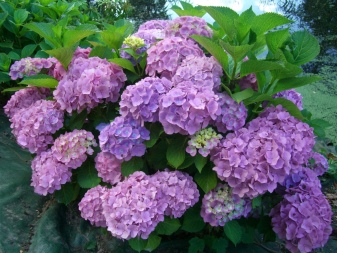
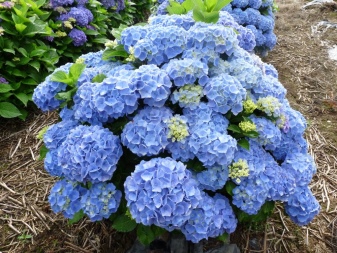
Another attractive broadleaf hydrangea is Endless Summer. The variety was bred in the United States in the 1980s and was immediately appreciated for its ability to withstand extreme cold.After a harsh winter by American standards, only this culture was able to bloom. Tall (2 m) "Endless summer" in width reaches 1 m. Typical features of the plant are large spherical inflorescences with various colors and strong foliage of matte tone. There are denticles along the edges of the leaves. The shoot is flexible and durable at the same time.


Nikko Blue can be considered as an alternative. This culture can develop steadily on a windowsill throughout the summer. The height of the bush does not exceed 1.5 m. The bright green foliage looks beautiful and harmonious. Shoots are of a herbaceous type, but may lignify and crack in the second year of development. The flowers are large and can change tone from white to blue (depending on the chemical properties of the soil). Flowering affects both fresh and last year's shoots. It lasts until the last summer days.
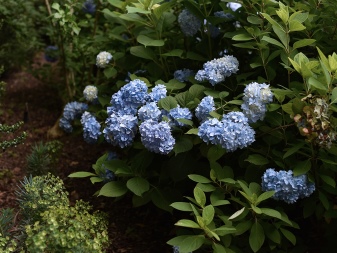
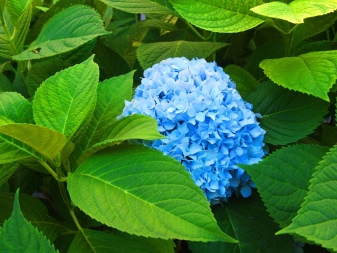
The Hot Red variety forms inflorescences that look like a flaming ball. This color only becomes more noticeable due to the contrast with the dark green leaves. The flowers themselves are small, but a lot of them are collected on the peduncles. Juicy red petals are the main source of the plant's charm. The flowers are grouped into peculiar caps on the tops of the stems. The diameter of the cap is sometimes 0.15 m. The longest flowering period is achieved with careful shelter for the winter.
From above, the branches develop vertically, and on the sides they bend in an arc. The foliage is characterized by an ovoid shape. At the tops, the leaf is sharper, from the sides it seems to be serrated. When flowering ends, the box is folded, divided into 2-5 compartments.
Seeds develop in each of the compartments.

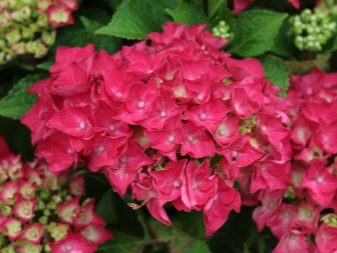
The Blaumais variety may also be good. It is a deciduous shrub that grows vertically upwards. In a container, such a hydrangea reaches a maximum of 0.5-0.7 m.In open ground, it grows up to 1.8-2.2 m.The width is 1.5-2 m.In a year, the culture will add 0.2-0, 25 m. The leaves of Blaumays resemble an oblong or expanded egg. They are green above and have sparse white hairs. The flowers form umbellate inflorescences up to 0.22 m in diameter. During flowering, this hydrangea literally attracts insects. Its root system does not go deep, but it branches out strongly in breadth.
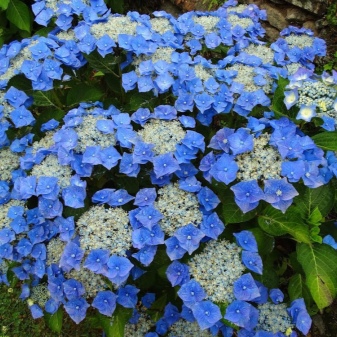
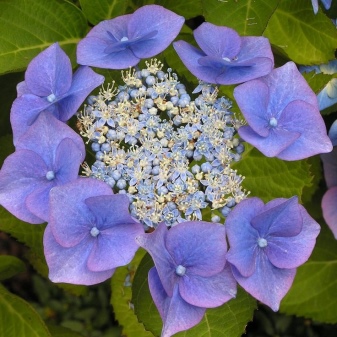
The variety "Peppermint" is distinguished from other hydrangeas by the burgundy color of the branches. Initially, the inflorescences are scarlet, with a slight brilliant tint. By the end of summer and the beginning of autumn, the color of the flowers becomes very rich (but will invariably refer to the burgundy-pastel range). Flowers have a wide white border. The petals in the middle are pink or blue, flowers can appear on the shoots of the current year.
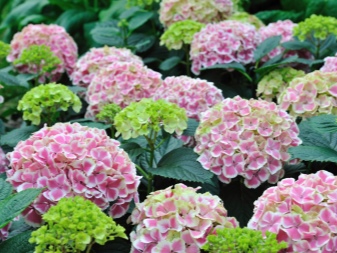

Macrophylla Rough often becomes an attractive choice. - this is the name of one of the types of hydrangea. The height of the bushes reaches 1.5 m. Flowering occurs in July, August and September. The middle of the inflorescence contains purple-blue flowers surrounded by white buds. The flat inflorescences themselves have a cross section of 0.2 m.
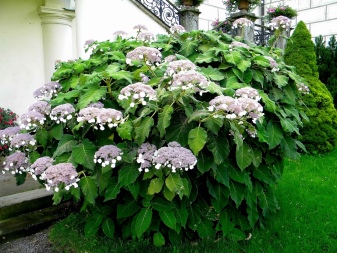
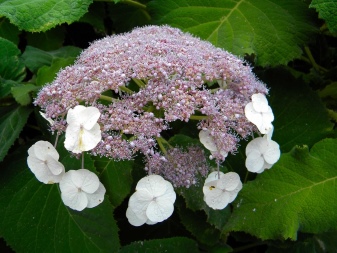
It is appropriate to complete the review of hydrangeas on the Aisha variety. A beautiful and unusual-sounding name is well deserved - this shrub first appeared on Japanese soil, and came to Europe at the end of the 19th century. He quickly occupied a significant niche in garden and park design. Decorative qualities are due not only to bright flowers, the mass of which lushly covers the bush.
From the beginning of spring to the end of autumn, the plant is decorated with its leaves. They are graceful and large, shaped like an egg. In summer, the leaf is bright green, but turns red at the end of the season. The flowers are about 0.03 m in size, mainly they are painted in bluish, lilac or pink tones.
Important: you can not plant "Aisha" in direct sunlight and under trees equally - partial shade is critically important for this culture.
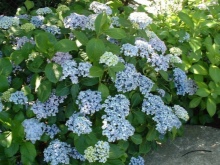
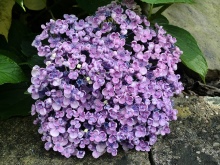
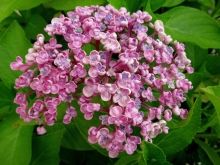
Landing
Whichever variety of large-leaved hydrangea is used, it is very important to plant it correctly. This plant is extremely finicky.It is impractical to plant hydrangeas near a tree, as it will take away too much valuable moisture. It is noted that under constant sunlight, the plant:
- grows more slowly;
- loses the attractiveness of its leaves;
- reduces the size of inflorescences.
It is much better if the sunlight only touches the plant in the morning. Therefore, hydrangeas are planted in the east or west of the site. Certain varieties are allowed to be planted in light zones, but then the excessive brightness of the sun will have to be compensated for by intensive watering. When the heat hits, light shading is required. At the same time, it is unacceptable to place bushes where drafts are constantly blowing.

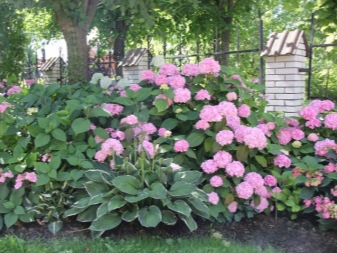
The soil must be well drained. The culture grows well on clay soil with an abundance of nutrients. But on sandy ground, she does not feel well. The earth is necessarily acidified to prevent chlorosis. For acidification, it is recommended to use soil collected under conifers.
Experts advise purchasing container seedlings, since a plant with open roots does not take root well enough. The best period for planting in cold areas is the first decade of May. Important: you need to be guided not only by the calendar, but also by the fact that the snow melts and the earth is warmed up. In the south, if there is confidence in sufficient warmth, planting can be done in the autumn months. At the same time, it is undesirable to postpone work until November, otherwise the culture will not take root until the cold weather begins.
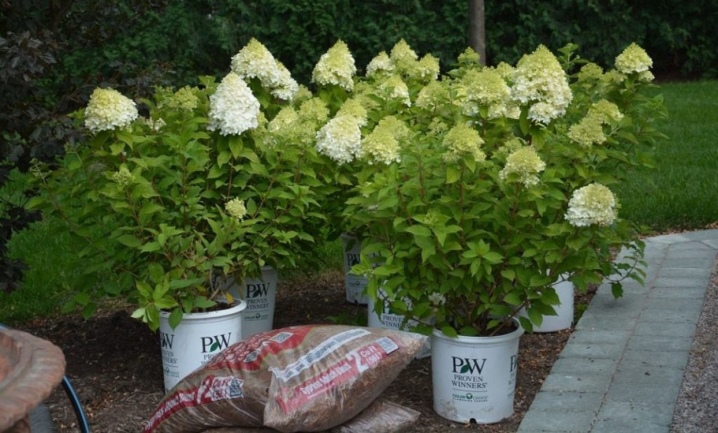
The planting soil is:
- 2 shares of leafy land;
- 2 shares of humus;
- 1 share of sod land;
- 1 share of washed river sand.
During planting, add to the soil mixture:
- 0.02 kg of urea;
- 0.07 kg superphosphate;
- 0.025 kg of potassium sulfate.
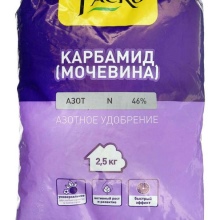
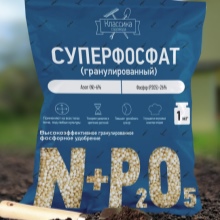

It is necessary to take into account the acidity at the very beginning, because it is almost impossible to change the acid-base balance after disembarkation.
The planting hole is dug 0.4 m deep, 0.4 m wide and 0.5 m long. A gap of 1.2-1.6 m is left between the bushes. In acidic, nutrient-rich soil, the excavation is made smaller, in poor soil, it is increased in depth and in diameter. With the close proximity of soil waters, a drainage layer is formed, which is created with the help of:
- gravel;
- expanded clay;
- brick battle.
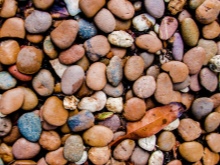
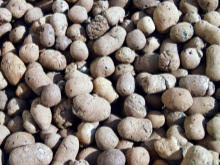

Excessively dry soil is improved by laying a hydrogel. 30 ml of this substance is enough for 1 planting pit. You need to dig it 14-28 days before planting, then fill it with the prepared substrate. Then the soil will have time to settle and be filled with oxygen. The seedling removed from the pot is watered, and then laid in a mound, inside which it is more convenient to spread the roots.
When backfilling, the soil is immediately compacted. The root collar is held either at ground level, or 0.02-0.03 m above it. The planted hydrangea is immediately watered, spending 9-10 liters of water. To retain moisture in the near-trunk circle, sawdust, bark and peat are used. The mulch layer should be 0.06-0.08 m.
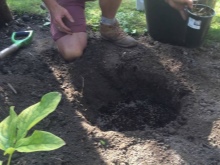
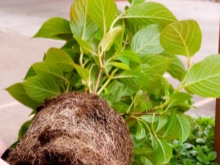
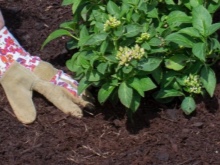
Follow-up care
Now let's look at some of the rules for caring for a seedling.
Watering
Growing hydrangea outdoors is difficult and requires a lot of patience. Large-leaved hydrangea is very sensitive to lack of water. Water the plant systematically and as abundantly as possible. It is unacceptable for the earth to dry out. Every seven days, about 20 liters of water is poured onto the bush. Reduce watering if active rains begin. Laying mulch also helps to reduce water consumption.
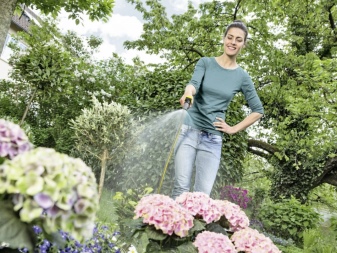
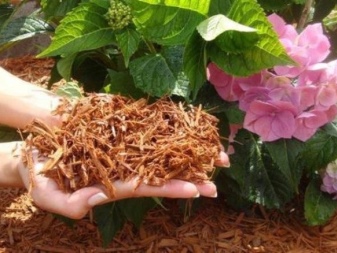
Top dressing
An aqueous solution of mullein or chicken droppings is used as organics for hydrangeas. In this case, take 10 liters of water per 1 kg of active ingredient. If desired, use humus, which must be poured around the perimeter of the trunk circle. A 5% gibberellin solution helps to speed up the onset of flowering. The second phase of feeding covers June and July: at this point, mineral complexes must be applied to support flowering bush plants.
Important: you can apply fertilizer not only for the hydrangeas themselves, but also for the rhododendrons. Judging by the experience of gardeners, good results are obtained:
- Fertika;
- Agricola;
- Bona Forte;
- Pocon;
- "Compo".
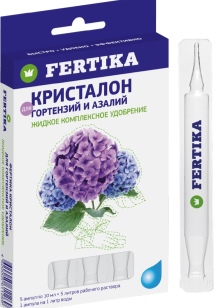
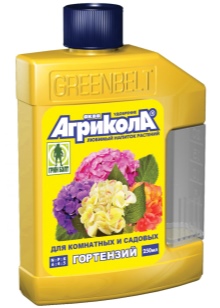
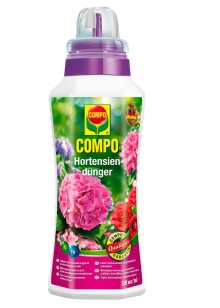
It is advised to add any of these mixtures 2 times every 30 days. It will be possible to increase the flexibility of the shoots if the plantings are watered with water with the addition of potassium permanganate. It is not necessary to make a concentrated solution. With the approach of meteorological autumn, nitrogen compounds should be eliminated. Because of them, an unjustifiably rapid development of greenery is provoked.
It is advisable to switch to potassium and phosphorus supplements in order to strengthen the roots and improve the formation of flower buds on the shoots of the current year after flowering.
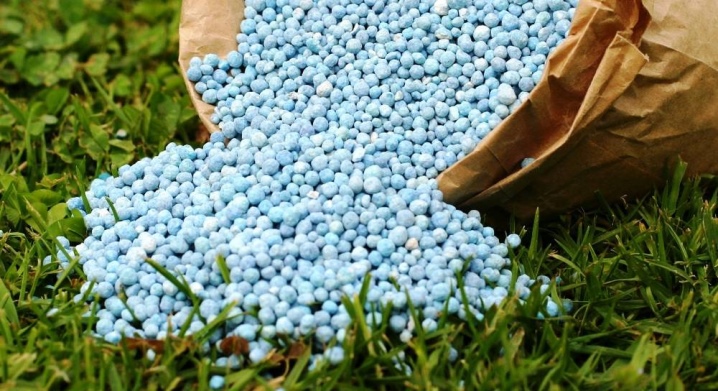
Pruning
If pruning is not done or is done incorrectly, the hydrangea does not bloom well and can even get very sick. Important: any healthy shoots are only partially cut off. With the onset of spring heat, it is required to destroy the parts of the plant that have frozen and remained lifeless for other reasons. At a time, you need to slightly trim 2 or 3 previous shoots. This will speed up the development of new branches.
A rejuvenating haircut is needed when the old shoots have lived for 3 or 4 years. It is forbidden to cut more than 25% of the bush. In the autumn months, cut out all inflorescences that have faded. Only the topmost leaves are left. If you remove them too, flowering buds may suffer. In the first 2 years, the inflorescences are pinched during budding to achieve active root formation, then the flower will later thank with more active flowering.
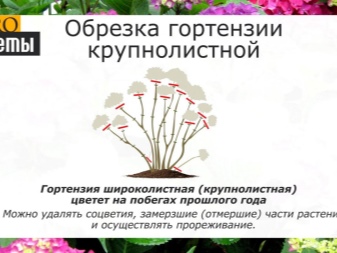
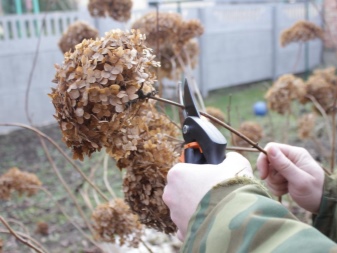
Preparing for winter
In addition to fertilizing and cutting large-leaved hydrangeas, they also need to be covered for the winter. The main requirement is that the soil must be dry. It is also necessary to wait until the surface of the shrub dries. To speed up drying, during rains, plants are covered with films and supports. For the winter, large-leaved flowers are wrapped in sackcloth, wound in 2 layers.
Before the arrival of early frosts, the branches are tied to each other and bent to the ground. The rest of the leaves are cut with pruning shears. Important: the soil should be covered with spruce branches or coniferous sawdust. In the springtime, there is no need to rush to remove the protective material. First, you should make sure that the return cold has finally passed.
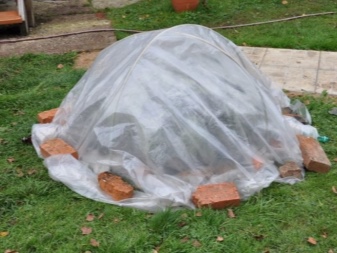
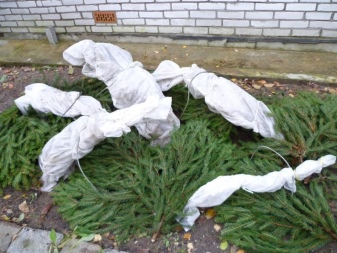
Possible problems
If hydrangeas turn yellow, it can be assumed that the reason is a lack of light (or, conversely, excessive insolation). Yellowing associated with improper lighting is eliminated by transferring the plant to another place or creating the necessary conditions artificially. Sometimes yellowness is provoked by excessive moisture. In this case, the irrigation frequency is immediately reduced. In the future, you just need not to make such mistakes, and the problem will be eliminated.
Sometimes they encounter another defect - when the hydrangeas turn pale. To cope with a situation in which the leaves of an ornamental plant brighten, it is mainly the competent use of fertilizers that helps. It is likely that something was done wrong with them. Especially a lot of feeding is required during budding.
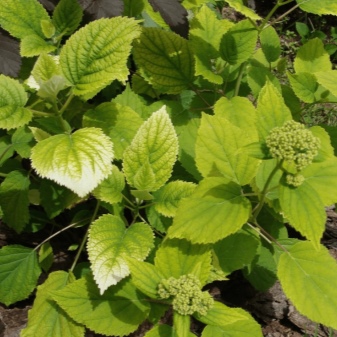
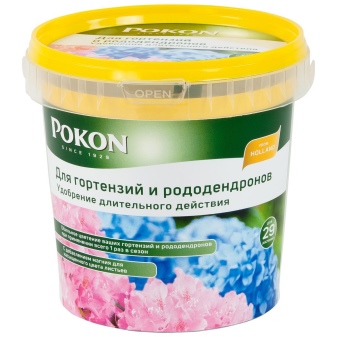
There is also such a complaint: hydrangea does not bloom, but gives only foliage.
Because of this, it is not always possible and necessary to treat it. You must first check how mature this or that bush is. The formation of ovaries can be expected only in the second year of life. In addition, it must be remembered that an exotic guest can be drowned out by nearby trees. Another nuance - good color development is possible only on:
- loosened;
- containing a sufficient amount of nutrients;
- thoroughly moistened soil (sometimes, for the same reasons, the culture even grows poorly).
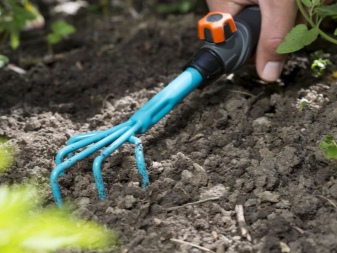
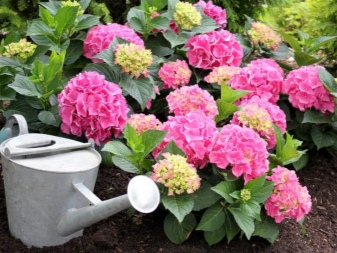
Disease and pest control
Black dry spots on the edges of the leaf are associated with excessive water hardness (it needs to be defended for 24 hours) or with sunburn. Wet blackening is expressed in the appearance of darkened, too soft leaves. The reasons for this ailment are:
- excessive jerks of temperature;
- drafts;
- excessively active watering;
- too dense soil that interferes with root respiration.


Sometimes you have to take care of the treatment of hydrangea chlorosis. This ailment is provoked by an insufficient intake of iron. Sometimes there is more than enough of it in the earth, but assimilation is too little. The main symptom of chlorosis is the aforementioned lightening of the leaves. Therefore, if flower growers cannot solve this problem with simple means, they only have to seriously treat the plant.
Chelated iron products provide good support. Among them, "Ferovit" is especially distinguished. An alternative to it is "Antichlorosis", the purpose of which is clear already from the name. Hydrangea foliage is sprayed with these compounds or a solution of ferrous sulfate and citric acid. Important: if the disease is started, spraying at the root will be required.
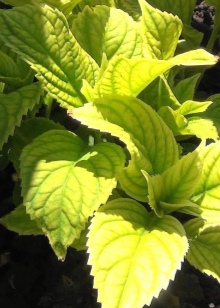

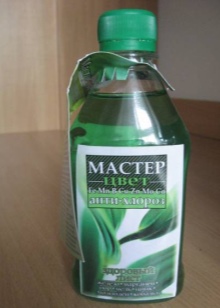
An alternative way to combat is the use of potassium nitrate and iron sulfate dissolved in water. Processing (watering) is done twice or three times, first with potassium nitrate, and then with iron sulfate. The concentration of the mixtures in both cases is the same - 0.04 kg of active ingredient per 10 liters of pure water.
White rot from the soil enters the roots. They cannot normally supply the rest of the plant with nutrients and soon the bush dies. The ailment can be detected by the characteristic darkening of the shoot and the formation of a cotton-like plaque. Eliminate white rot with fungicides. Gray rot is also dangerous. To combat it, use:
- "Pure color";
- "Speed";
- Fundazol.
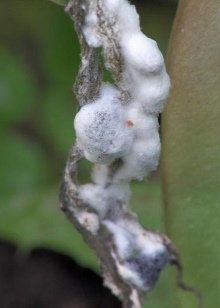
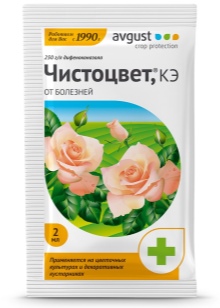
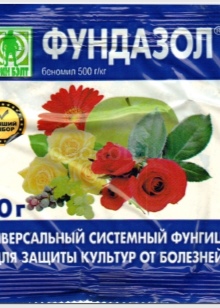
If signs of septoria are seen, all diseased parts are destroyed.
The plant itself will be helped by formulations based on copper. "Alirin" and "Fitosporin" will help with powdery mildew. Taking on the treatment of advanced phases, you need to use "Topaz" or "Pure color". Of the pests, leaf aphids are a particular danger.
These insects do not attach very rigidly, therefore, at the initial stage of damage, the foliage is doused with powerful water jets. But you need to watch that they do not break the flower. In severe cases, insecticides are indispensable. Spider mites should be washed off with soapy water. If there are too many of them, they use "Akarin" or "Fitoverm", "Lightning" and "Tiofos" also show themselves well.
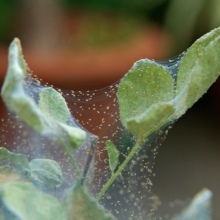

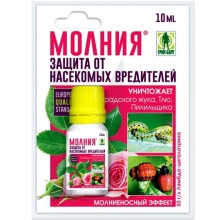
Reproduction
The easiest way to propagate hydrangeas is lignified cuttings. In this case, bloom can be expected next year. In the fall, the plants are covered for a while with non-woven materials. When in October there is a day with a positive air temperature, the hydrangeas are opened. Cuttings are cut to a length of 0.2-0.25 m.
Cut straight from the bottom, and from above - at an angle of 45 degrees. Leaves are torn off so that they do not interfere. Cuttings are clearly divided into groups of varieties. In boxes with sand and designating tags, they are placed in a non-freezing cellar or simply on the ground with shelter for the winter. In the spring, immediately after the snow melts, the planting material is removed, and its lower 0.05-0.07 m is soaked in diluted heteroauxin.
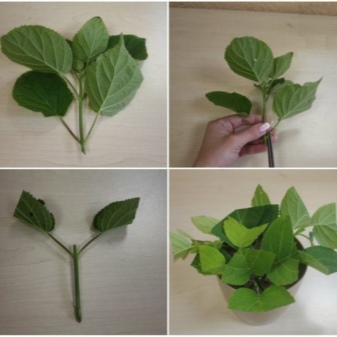
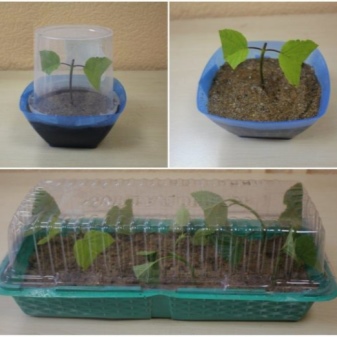
The substrate is made very simply: they take 66% peat and 34% sand. Instead of peat, however, it is sometimes advised to put rotted coniferous needles. To keep the air moist, you can cover the container with a cellophane bag. A support (wire bow, ice cream sticks, and the like) helps to avoid crushing the handle. Cuttings are rooted strictly in diffused lighting, without bright illumination. The procedure takes about 30 days.
Cuttings in the summer are also possible. In this case, they act shortly before the flowering of the shrub begins. Important: you also need to hurry so that the buds do not become woody. Cut off the tops of fresh shoots with 2-3 leaves (as in the fall). The buds that appear at the top are also cut off.
Growth catalysts will help improve rooting.
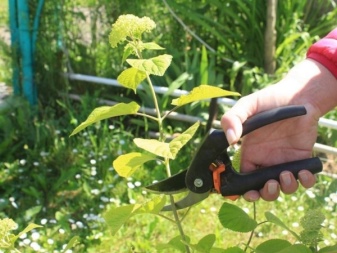

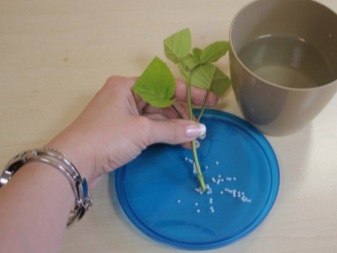

Examples in landscape design
The photo below shows how beautiful a large-leaved hydrangea can look surrounded by gray garden furniture. It seems not so bright spot, but the result will be brilliant.
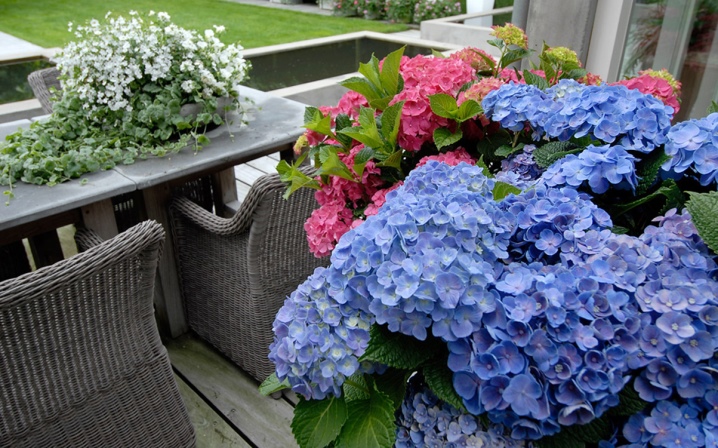
These flowers will look quite logical and pleasant against the background of an ordinary gray stone wall. In the setting around a rural house, it looks something like this.
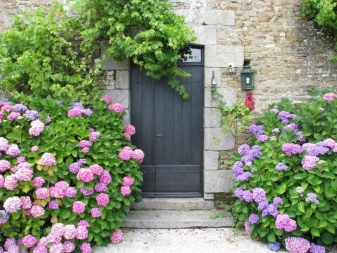
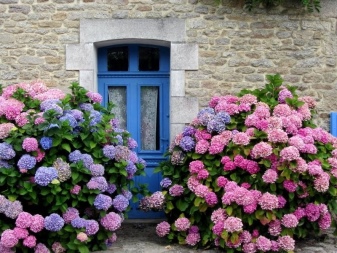
However, large lush compositions also look good - if they set off, for example, a nondescript stone wall.
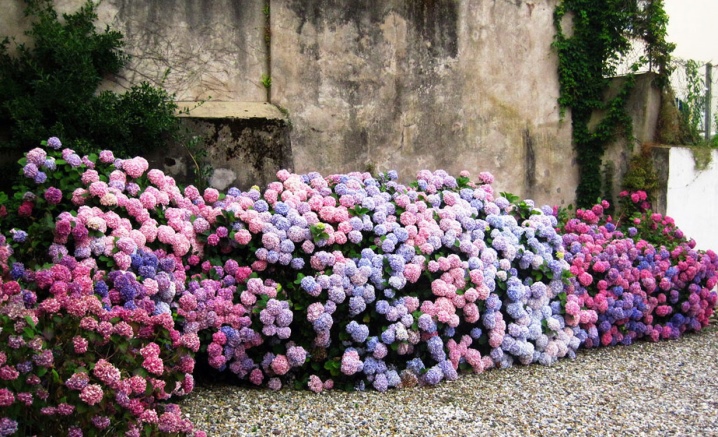
For all the secrets of growing large-leaved hydrangea, see the next video.



































































The comment was sent successfully.